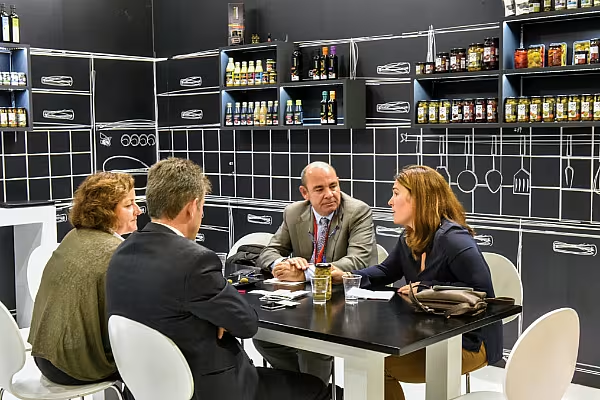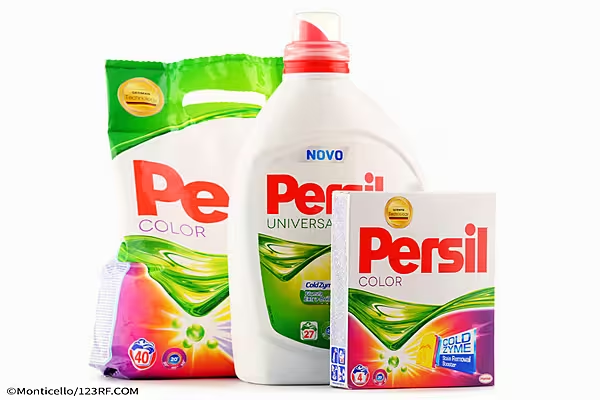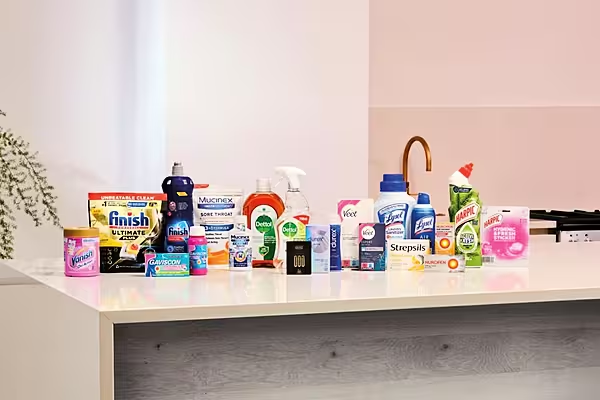As the world’s largest food fair, planning for Anuga commences as soon as the previous edition closes its doors. ESM spoke to Anne Schumacher, vice-president of food and food technology, Koelnmesse GmbH, about how the event comes together. This article first appeared in ESM Issue 5 2019.
Such is the size of Anuga that it equates to the population of a medium-sized German city, say Heidelberg or Leverkusen, descending on Koelnmesse for five days of serious business. Events of that scale don’t happen overnight – in fact, even before Anuga 2019 opens its doors, the planning process for the following event is already under way.
Ahead of this year’s event, ESM caught up with Anne Schumacher, vice-president of food and food technology, Koelnmesse GmbH, about what makes Anuga so special, as well as the logistical challenges in putting a show of this magnitude together.
ESM: Anuga celebrates 100 years this year. What is it about the event that you think has given it such longevity?
Anne Schumacher: There are several key aspects that have contributed to the success, and thus to the longevity, of Anuga. Anuga is clearly the largest and most important trade fair for food and beverage in the world.
In 2017, 7,405 exhibitors presented their products to around 165,000 trade visitors – this is a globally unique format. Anuga was, and still is, the central hub of the food industry and marketplace for innovation and information in the food business. It provides inspiration and networking at the highest level, and is therefore a must for many decision-makers in the industry.
The consistent expansion, the qualitative selection, the ongoing bundling of product groups, as well as the clear focus on food and beverage, have made Anuga what it is today.
Anuga is a massive logistical challenge. How early does the planning for the show begin, and what is the most challenging aspect of bringing it all together?
As we keep saying, ‘After the fair is before the fair.’ Our sales process usually starts with our early-bird booking phase a year and half before Anuga takes place. From this point on, it is an ongoing process.
As we get nearer to the event, more and more people get involved, to ensure that things like the hall layout, the parking grounds, and the ticketing work.
At the fair itself, more than 200 people are involved. This number does not include the people who work at the exhibitors’ booths, of course, or the hostesses, security, and service people who are there only temporarily during the fair.
The most challenging aspects are the planning of the halls and build-up of the stands, along with numerous logistics processes in parallel. One of the biggest logistic challenges is to lead all trucks to the right place, via our traffic control system.
The official country partner for the 2019 edition is Paraguay. Why was it important to place the focus on South America this year?
Paraguay has around seven million inhabitants and is well known as an agricultural country.
Besides soya, maize, wheat, manioc, sugar cane and rice, Paraguay’s export goods primarily also include meat. In terms of beef, maize and soya, the country is among the top ten producers worldwide and, at the same time, places the focus on high quality. All of these factors make the country very exciting – and, more or less, a ‘hidden champion’.
In addition, we have upheld very good business relations with South America for many years. In selecting Paraguay as the partner country of Anuga, we are, for the first time, drawing the attention of the experts to the South American continent and thus broadening the horizon – in principle, it is precisely what a trade fair is supposed to do.
Trends and innovations will receive a particular focus at Anuga 2019. How does the event ensure that it keeps one step ahead of the latest trends influencing the market?
Trends have always played an important role at Anuga. Since its foundation in 1919, Anuga has always strived to stay on the pulse of time. This also includes observing the market, recognising the trends and important themes of the industry, and integrating these into the trade fair.
Of course, this also has to do with the fact that we want to continue to offer the exhibitors and visitors relevance. A trade fair like Anuga can only remain successful if it reflects the market, offers the possibility for exchange, and additionally creates added value and impulses via new themes and trends, as well as interesting events, such as [the] Anuga Trend Zone or Anuga Horizon 2050.
Due to its ten trade shows, Anuga offers a curated selection of specialised themes for all needs and every target market. Whether it’s superfoods, halal food, non-GMO, organic, ready-to-eat, functional and vegetarian products, exhibitors are presenting products that reflect these trends.
Many of Anuga’s trade shows are supported by industry forums and events. Why is it important to offer these sorts of supporting events?
Anuga is not only a pure product show, but a platform for knowledge transfer and new impulses. With these supporting events, we can offer trade fair visitors additional insights and facts concerning important markets or segments within the industry.
Together with our partners, it is our aim to support trade fair visitors in their business, and thus to provide added value. This ranges from best practices or new business cases to future-oriented ideas and solutions, as well as knowledge exchange with experts from [the] industry.
Anuga is set up to encourage and foster networking, making it the biggest food networking event in the world. What concepts have been introduced to enable both exhibitors and visitors to better engage with each other?
First of all, all of our events and congresses bring people together and foster exchange. Second, with our Matchmaking365, we have an excellent digital tool that supports our trade fair visitors preparing their visit [to] Anuga.
They can schedule meetings with exhibitors, get further offers or information ahead of the fair, and exchange knowledge with each other.
Matchmaking365 is not only an excellent tool for your trade fair preparation, it also extends the trade fair online until the next exhibition.
Koelnmesse is involved in events all over the world. In what ways do you take the learnings from international events and implement these in Anuga, and vice versa?
Because of our long-term experience in doing fairs all over the world, Koelnmesse – or, in this case, Anuga – is often a role model for other fairs. Thus, our learnings have an impact on the organisation of fairs abroad, but of course, some of our trade shows abroad also strengthen Anuga in Cologne.
One aspect is that we get a better understanding of foreign markets, trends, and how the industry works. We use this knowledge to shape our offering in a way that fits the needs of different target groups. It also helps to inform new exhibitors or trade visitors about the benefits of Anuga according to their business interests.
In addition, we can create special events for certain markets in order to transfer know-how, and, of course, successful trade fairs abroad, such as Anutec India, Thaifex Anuga Asia or the new Anufood Brazil, foster the presence of trade fair visitors from these countries at Anuga or Anuga FoodTec in Cologne.
What do you think will be the main talking point of this year’s Anuga – what is likely to grab the most attention?
I believe the new Boulevard of Inspiration will play an important role because it includes the Anuga Taste Innovation Show, the Anuga Trend Zone, and Anuga Horizon 2050.
It is the central hot spot for visitors interested in exhibitors’ innovative product innovations, the latest market and consumer trends for the coming years, and future development scenarios and future topics in the food and beverage industry.
Anuga Horizon 2050 will be particularly interesting to our visitors, I believe, because we will take a look at what’s coming next and how the industry can prepare for this. Another big topic will be plant-based food solutions, new ingredients, such as hemp or insects, and further alternatives to meat. All photos courtesy Koelnmesse.
© 2020 European Supermarket Magazine – your source for the latest retail news. Article by Stephen Wynne-Jones. Click subscribe to sign up to ESM: European Supermarket Magazine.














